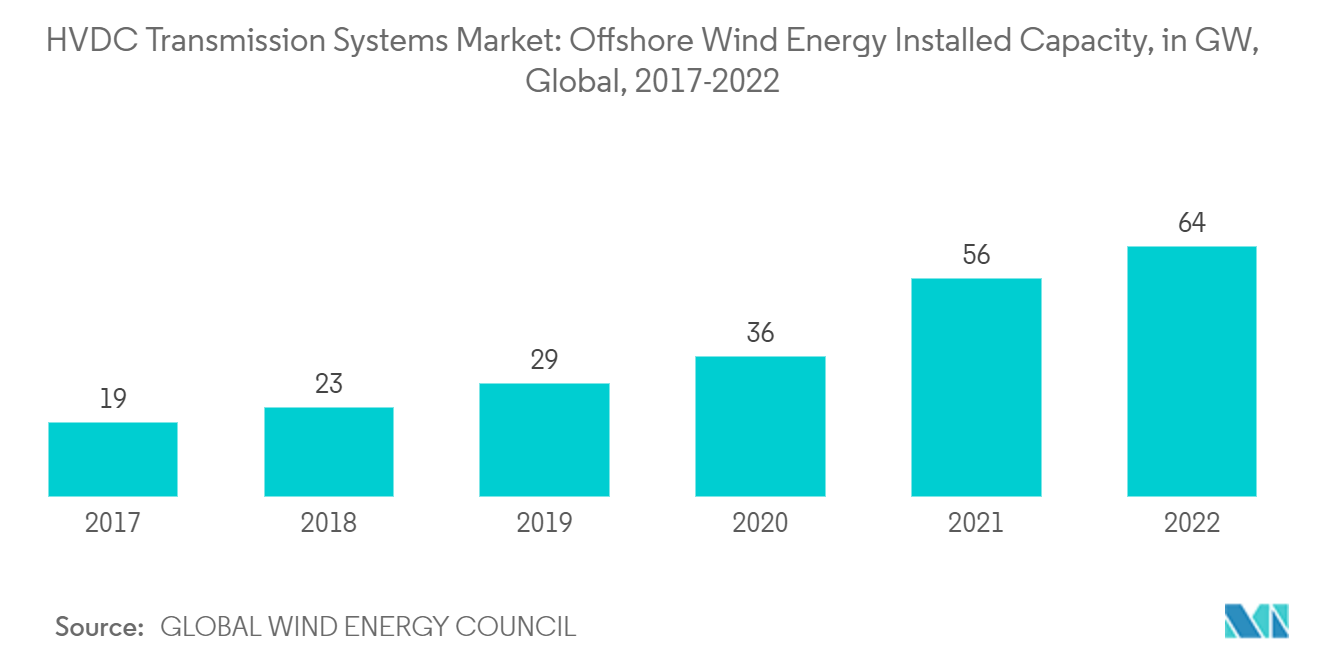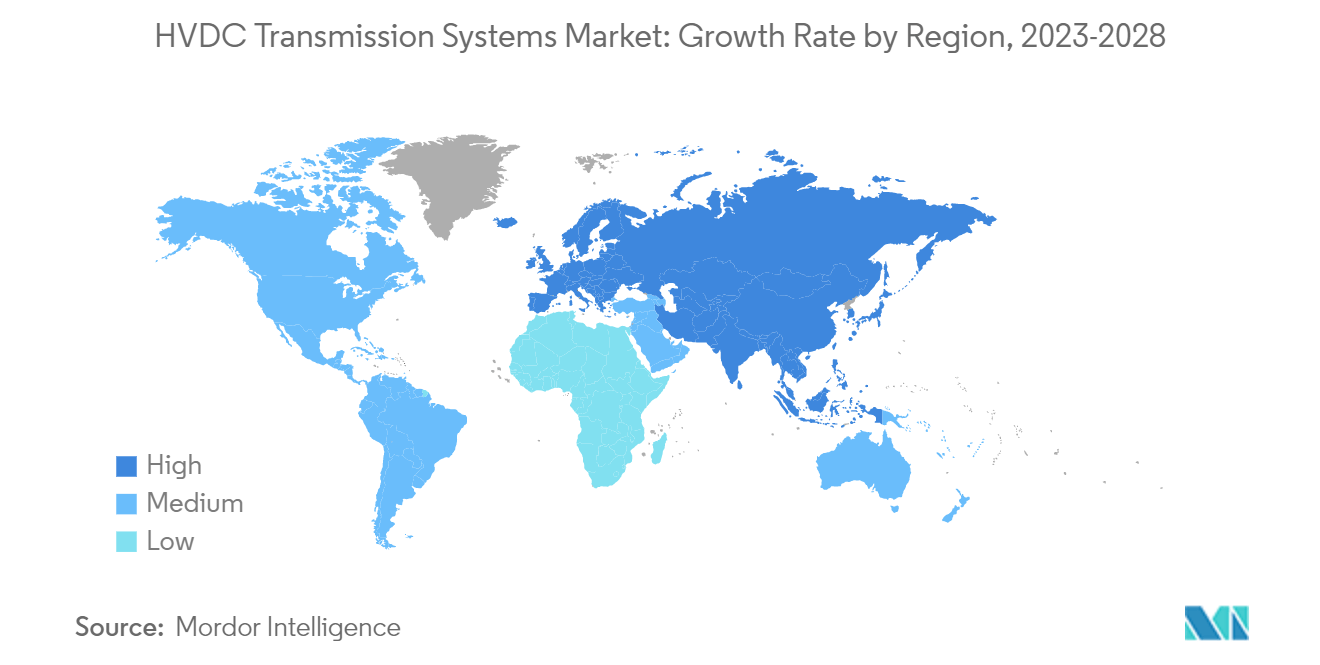Market Trends of HVDC Transmission Systems Industry
Submarine HVDC Transmission Systems to Witness Significant Growth
- The submarine HVDC transmission system market is likely to grow significantly due to the development of submarine power transmission systems worldwide. Submarine electricity transmission is gaining importance due to the increasing focus on power trading between countries.
- The HVDC submarine power transmission system is crucial for developing future power transmission networks. HVDC transmission is the only solution for transferring high power across long subsea distances. The major purposes served by HVDC submarine transmission are to interconnect countries or islands separated by sea and to connect remote offshore platforms to main transmission grids.
- The HVDC submarine power transmission system is also used in offshore wind platforms for power transmission to the shore. In 2022, according to Global Wind Energy Council, the global total offshore wind accounted for 64 GW, with an annual growth rate of 14% compared to the previous year. Thus, with the increasing power generation from offshore wind, the use of the HVDC submarine power transmission system is expected to increase.
- Moreover, the HVDC submarine power transmission system helps countries separated by water bodies to trade electricity with each other, which is a significant driver for the segment as countries are interested in generating revenue from excess electricity generated through renewable energy sources.
- Furthermore, developing offshore projects, such as wind power plants and offshore oil and gas upstream projects, offers increasing business opportunities for HVDC technology worldwide.
- Thus, owing to the above points, demand for the submarine HVDC transmission system is expected to increase in the forecast period.

Europe is Expected to Dominate the Market
- The European power generation mix is expected to change considerably in favor of renewables over the next few years, with countries such as Germany, Spain, Belgium, and France, increasingly moving toward a low-carbon economy. The region also has several policies, such as the EU's renewable energy directive and national renewable energy action plans, that support the transition to a low-carbon energy system.
- The energy transition continues to be an integral part of Germany's energy landscape, with ambitious goals to cut CO2 emissions by 80% and increase the share of renewable energy in total energy consumption to 60% and 80% of electricity generated from renewable sources by 2050.
- With the increasing integration of renewable energy sources and the growing need to enhance the security of supply, HVDC grid technology is expected to evolve in the country. Moreover, investments in the offshore wind industry, solar photovoltaic, grid expansion, and energy storage projects require smart energy infrastructure to balance the fluctuating supply of renewable sources.
- For instance, TenneT started the tender for the platform and HVDC system for the offshore Dutch IJmuiden Ver projects and will start the project by the end of 2022 for the offshore IJmuiden Ver wind area. In addition, the project is expected to be commissioned by 2028.
- Excess renewable energy generation capacity in France and Spain is expected to be more easily transmitted between the two countries following the granting of USD 600 million by the European Union to build an undersea power cable across the Bay of Biscay. This, in turn, is likely to require HVDC transmission lines to transmit with low transmission losses, improve supply security and resource diversification, and pave the way for power market integration in southwestern Europe.
- Thus, owing to the above points, Europe is expected to dominate the HVDC transmission systems market in the future.


